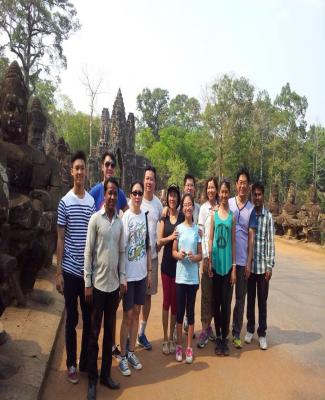

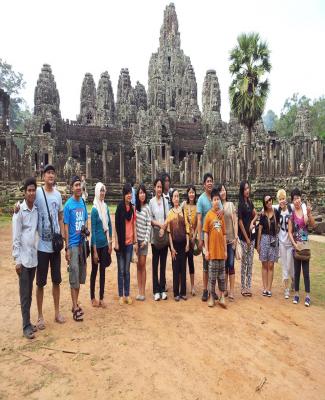

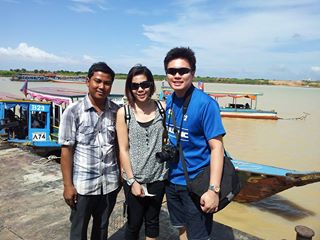
.jpg)
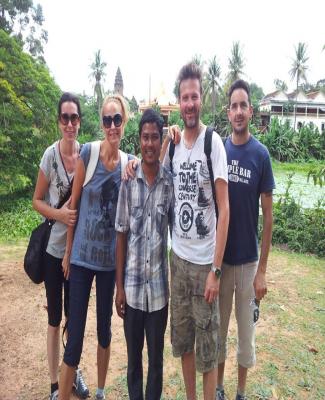
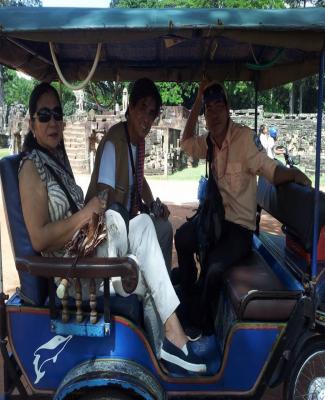
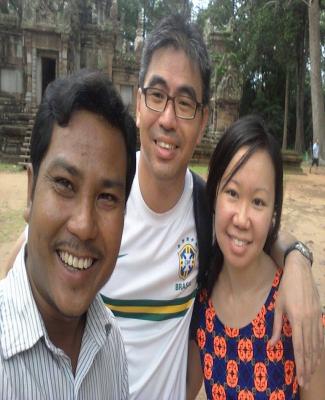

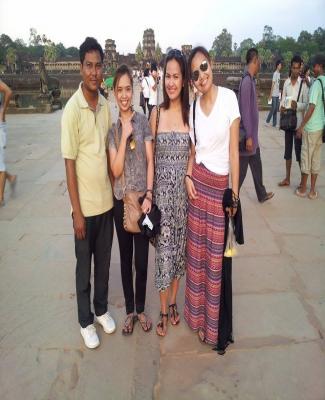
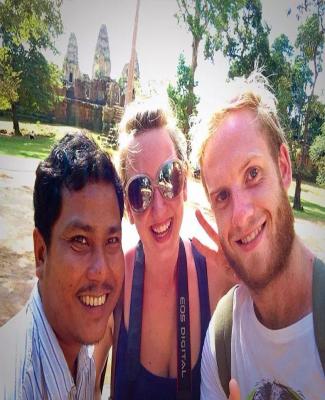

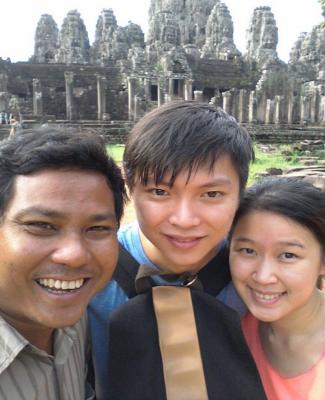
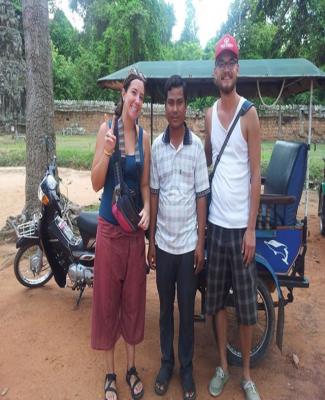

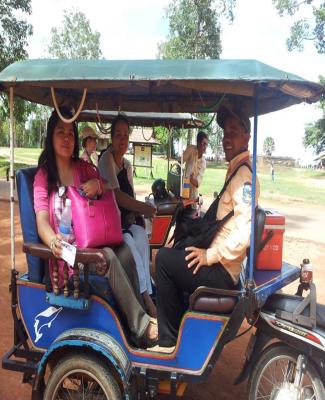
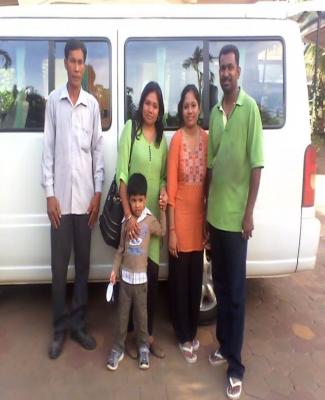
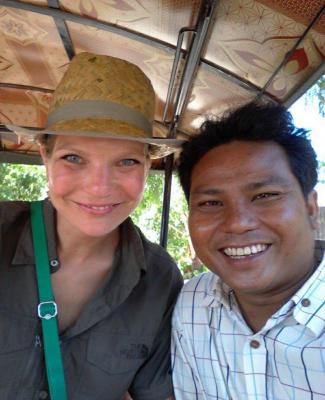
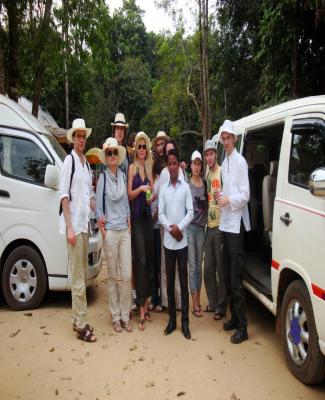
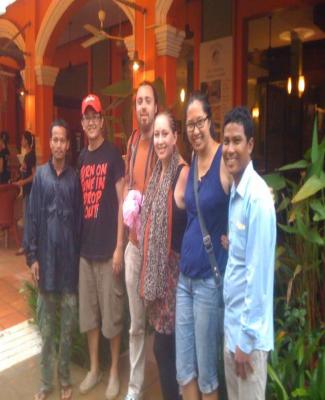

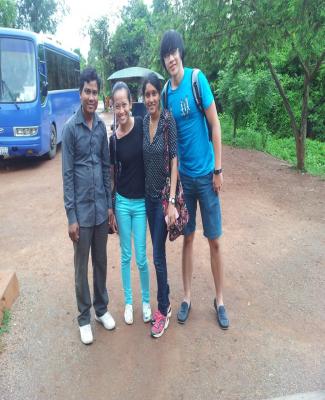

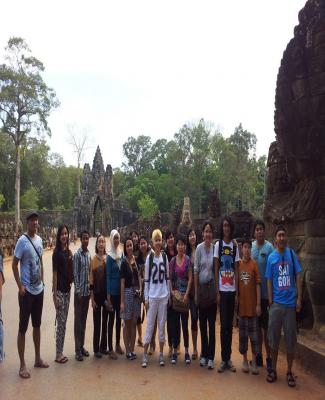
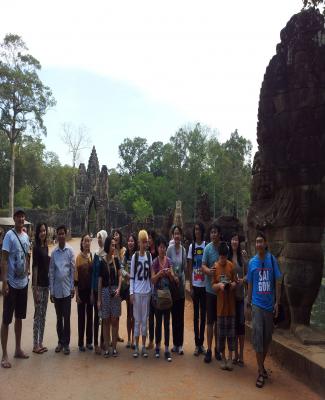
Angkor Wat in Siem Reap
Angkor Wat Temple combines two basic plans of Khmer temple architecture: the temple mountain and the later galleried temple, based on early Indian Hindu architecture, with key features such as the Jagati. It is designed to represent Mount Meru, home of the devas in Hindu mythology: within a moat and an outer wall 3.6 kilometres (2.2 mi) long are three rectangular galleries, each raised above the next. At the centre of the temple stands a quincunx of towers. Unlike most Angkorian temples, Angkor Wat is oriented to the west; scholars are divided as to the significance of this. The temple is admired for the grandeur and harmony of the architecture, its extensive bas-reliefs and for the numerous devatas (guardian spirits) adorning its walls. The modern name, Angkor Wat, means "City Temple"; Angkor is a vernacular form of the word nokor which comes from the Sanskrit word nagara meaning capital or city. Wat is the Khmer word for temple. Prior to this time the temple was known as Preah Pisnulok, after the posthumous title of its founder, Suryavarman II. History of Angkor WatThe magnificent temple ruins of the Angkorian from the 9th to the 13th centuries, including Angkor Wat, Bayon and many other ancient temple ruins of the Khmer Empire are located in the Angkor Archaeological Park. The Park, just north of the town of Siem Reap, is more than 400 square kilometers in size, and is a World Heritage Site. The temple ruins within the Angkor Archaeological Park are what remains of the thousand year old Angkorian-era capitals and temples of the ancient Khmer Empire. The name ‘Angkor’ comes from the Angkorian-era Khmer Empire that encompassed much of Southeast Asia from 800 and 1400CE, and also refers to the capital cities of the Empire. The Khmer Empire held great wealth and power, and dominated the area of present day Cambodia, as well as much of Thailand, southern Vietnam and Laos militarily, economically, and culturally. Most of the structures seen today were constructed between the 9th and 12th century CE., and represent the height of Khmer art, architecture, and culture. The Khmer kings constructed magnificent temples, and huge waterworks, and at its zenith, the capital city at Angkor was populated by more than a million people. Angkor Wat was constructed from the early to mid 1100s by King Suryavarman II at the height of the Khmer Empire’s political and military power. It was built in the shape of an enormous temple-mountain, and reportedly took some 50,000 artisans, workers, and slaves to complete. It was dedicated to the Hindu god, Vishnu, and is the world's largest religious building. King Suryavarman II built it as his state temple, although the temple has a west facing orientation, and some scholars have theorized that it was actually his funerary temple. Whatever its original purpose, Angkor Wat is one of the world's most awe-inspiring and breathtaking architectural accomplishments of all time. When one first visits Angkor Wat, the impact is breathtaking, and just seeing photos do not prepare one for the reality of this majestic structure. Approaching along the causeway, at first the architecture and outline against the sky makes it appear almost two- dimensional, like a huge, real-life postcard. However, as one gets nearer, the detail and intricacy become increasingly apparent. Other temples built in the same time period and in the same style, are Thommanon, Banteay Samre, Wat Atwea and Beng Melea. It is speculated that Beng Melea may have been a model for Angkor Wat. Facade of Angkor Wat, a drawing by Henri Mouhot "One of these temples—a rival to that of Solomon, and erected by some ancient Michelangelo—might take an honorable place beside our most beautiful buildings. It is grander than anything left to us by Greece or Rome, and presents a sad contrast to the state of barbarism in which the nation is now plunged." Mouhot, like other early Western visitors, found it difficult to believe that the Khmers could have built the temple, and mistakenly dated it to around the same era as Rome. The true history of Angkor Wat was pieced together only from stylistic and epigraphic evidence accumulated during the subsequent clearing and restoration work carried out across the whole Angkor site. There were no ordinary dwellings or houses or other signs of settlement including cooking utensils, weapons, or items of clothing usually found at ancient sites. Instead there is the evidence of the monuments themselves. Style of Angkor Wat TempleAngkor Wat is the prime example of the classical style of Khmer architecture—the Angkor Wat style—to which it has given its name. By the 12th century Khmer architects had become skilled and confident in the use of sandstone (rather than brick or laterite) as the main building material. Most of the visible areas are of sandstone blocks, while laterite was used for the outer wall and for hidden structural parts. The binding agent used to join the blocks is yet to be identified, although natural resins or slaked lime have been suggested. Angkor Wat has drawn praise above all for the harmony of its design, which has been compared to the architecture of ancient Greece and Rome. According to Maurice Glaize, a mid-20th-century conservator of Angkor, the temple "attains a classic perfection by the restrained monumentality of its finely balanced elements and the precise arrangement of its proportions. It is a work of power, unity and style." Architecturally, the elements characteristic of the style include: the ogival, redented towers shaped like lotus buds; half-galleries to broaden passageways; axial galleries connecting enclosures; and the cruciform terraces which appear along the main axis of the temple. Typical decorative elements are devatas (or apsaras), bas-reliefs, and on pediments extensive garlands and narrative scenes. The statuary of Angkor Wat is considered conservative, being more static and less graceful than earlier work. Other elements of the design have been destroyed by looting and the passage of time, including gilded stucco on the towers, gilding on some figures on the bas-reliefs, and wooden ceiling panels and doors. The Angkor Wat style was followed by that of the Bayon period, in which quality was often sacrificed to quantity. Other temples in the style are Banteay Samré, Thommanon, Chao Say Tevoda and the early temples of Preah Pithu at Angkor; outside Angkor, Beng Mealea and parts of Phanom Rung and Phimai.
Angkor Wat Temple TodayThe Archaeological Survey of India carried out restoration work on the temple between 1986 and 1992. Since the 1990s, Angkor Wat has seen continued conservation efforts and a massive increase in tourism. The temple is part of the Angkor World Heritage Site, established in 1992, which has provided some funding and has encouraged the Cambodian government to protect the site. The German Apsara Conservation Project (GACP) is working to protect the devatas and other bas-reliefs which decorate the temple from damage. The organization’s survey found that around 20% of the devatas were in very poor condition, mainly because of natural erosion and deterioration of the stone but in part also due to earlier restoration efforts. Other work involves the repair of collapsed sections of the structure, and prevention of further collapse: the west facade of the upper level, for example, has been buttressed by scaffolding since 2002, while a Japanese team completed restoration of the north library of the outer enclosure in 2005. World Monuments Fund began work on the Churning of the Sea of Milk Gallery in 2008. Angkor Wat has become a major tourist destination. In 2004 and 2005, government figures suggest that, respectively, 561,000 and 677,000 foreign visitors arrived in Siem Reap province, approximately 50% of all foreign tourists in Cambodia for both years. The site has been managed by the private SOKIMEX group since 1990, which rented it from the Cambodian government. The influx of tourists has so far caused relatively little damage, other than some graffiti; ropes and wooden steps have been introduced to protect the bas-reliefs and floors, respectively. Tourism has also provided some additional funds for maintenance—as of 2000 approximately 28% of ticket revenues across the whole Angkor site was spent on the temples—although most work is carried out by foreign government-sponsored teams rather than by the Cambodian authorities. We Want to offer a package for your holiday in Siem Reap, Cambodia Please visit our Package Offer |
Recently Guest Booking:
Guest Name: Jaxon Hepp
Country: Italy
City: Castel Dell'alpi
Travel Date:
Arrival By: Other
Tour Name: Special Angkor Tour 3 Days Option 2 (3days with Tuk Tuk Driver)


